In the bustling world of cosmetics, L’Oréal has shown remarkable resilience in the first quarter of 2025, posting sales growth that exceeded market expectations despite navigating turbulent economic and geopolitical waters. With consumer behavior shifting due to various factors, including inflation and changing global dynamics, the beauty giant delivered impressive results. According to their latest financial report, sales for the three months ending March 30 reached a substantial €11.73 billion, reflecting a 4.4 percent increase in reported terms and a 3.5 percent rise when adjusted for comparable sales. This performance is particularly impressive given the mixed signals across different markets, with the U.S. presenting unexpected challenges while China’s market slightly outperformed forecasts.
Nicolas Hieronimus, L’Oréal’s CEO, emphasized the significance of Europe as the company’s strongest contributor to growth during this quarter. Emerging markets also showed dynamic activity, underlining the brand’s ongoing success and adaptability in various regions. While analysts expected organic growth to be more modest at 1.3 percent, the company’s strategic positioning and innovative marketing initiatives clearly outperformed these projections. This surprising boost in performance can be attributed in part to a well-timed IT transformation, which brought in an additional €100 million in net benefits, showcasing the benefits of effective internal changes at L’Oréal.
Navigating the complex global landscape means L’Oréal is constantly adjusting its strategies to counteract rising tariffs and other economic pressures. Hieronimus highlighted that their priority remains focused on driving growth while carefully managing profit and loss (P&L) to withstand these challenges. With a robust gross margin that remains healthy, the company aims to sustain its advantageous position amid fluctuating market conditions. By continuing to invest in their 37 international brands, L’Oréal is striving to solidify its leadership status in the beauty market—an area that inherently thrives on consumer trust and engagement.
In light of potential U.S. import tariffs, market analysts remain optimistic about L’Oréal’s ability to withstand these pressures. Jeremy Fialko, a leading consumer staples researcher, noted that the company’s extensive U.S. manufacturing capabilities play a crucial role in mitigating risks associated with tariffs. With five factories in the U.S. and a significant portion of its products being made locally, L’Oréal can better absorb the impact of any incoming tariffs. Although some high-margin luxury and dermatological products originate from the EU, the company’s diversified manufacturing network allows it to navigate these challenges more effectively.
While some product categories may be affected by consumer reluctance linked to rising prices due to tariffs, the overall sentiment remains hopeful for L’Oréal. There’s a possibility that competitor brands may need to increase prices more aggressively to counteract their tariff burdens, which could inadvertently benefit L’Oréal by making its offerings more attractive. This context could provide a valuable opportunity for L’Oréal to strengthen its market position while capitalizing on shifting consumer dynamics and preferences.
Looking ahead, Hieronimus expressed confidence in L’Oréal’s potential to not only endure the challenges of a volatile market but also to exceed growth expectations in the global beauty sector. With the anticipation of accelerating growth in sales and profits, the company is poised to continue its success story, even amid the headwinds of economic uncertainty. As L’Oréal forges ahead, its commitment to innovation and strategic foresight will be crucial in ensuring that it not only keeps up with trends but also sets the pace for the beauty industry’s evolution in the coming years.

